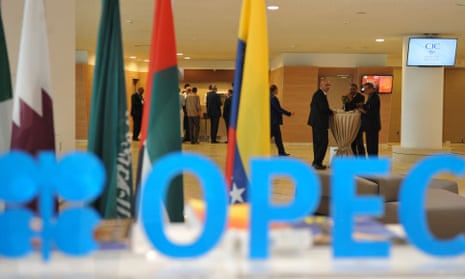Saudi Arabia’s gamble has failed. That, rather than the spike in oil prices, is the real story to emerge from the agreement reached by Opec’s 12 members that they must agree to cut production.
Let’s be clear, a deal to actually restrict the flow of crude oil onto the global energy market has not yet been reached. Opec has said that something needs to be done, and has made a vague commitment to trim between 500,000 to 1m barrels a day from current output, but it has yet to flesh out the details.
As one analyst rightly noted, Opec seemed to have been taking lessons from EU summits. It has agreed that something needs to be done, but has put off until another day the rather more difficult task of getting its fractious membership to decide what that should be.
The realisation that much still needs to be done before Iran agrees to cap its output, which has been rising since global sanctions were lifted, meant the knee-jerk jump in prices that followed the Opec move was short-lived.
This was not a game-changing move that will send prices shooting back up towards the $100 a barrel level. For that to happen there would have to be a much more stringent agreement to cut production and, crucially, stronger global demand.
Neither looks likely, and as a result Opec’s ambitions are relatively modest. Member states are desperate to put a floor under the price of crude because they depend on oil revenues to finance public spending. The lower the price goes, the more difficult it is for them to balance the books.
Saudi Arabia is not immune from these fiscal pressures. To be sure, it built up substantial reserves when the oil price was high but these are rapidly being depleted. Austerity measures have been introduced and are as unpopular in Saudi Arabia as they are everywhere else.
Flooding the global market with cheap crude was Riyadh’s answer to the challenge presented by US shale producers. The idea was that an oil price of between $30 and $40 a barrel would make output from the new operations uneconomic and would kill off the industry. The strategy would be painful for Saudi Arabia as well, but Riyadh had deep pockets.
Not deep enough, it transpires. Some US rigs have been mothballed, but the cost of producing US shale is coming down all the time. Saudi Arabia has had to accept that it is not going to deliver a knockout blow.
The deal tentatively agreed in Algeria is an acceptance of that fact. Opec’s glory days are long in the past and it is a much-diminished force. Having decided to wage an ill-judged war, the cartel has now run up the white flag.
Opec’s agreement should underpin the oil price. It might even nudge the cost of crude up a bit. But every dollar a barrel on the oil price is good news for the frackers of North Dakota.

Comments (…)
Sign in or create your Guardian account to join the discussion